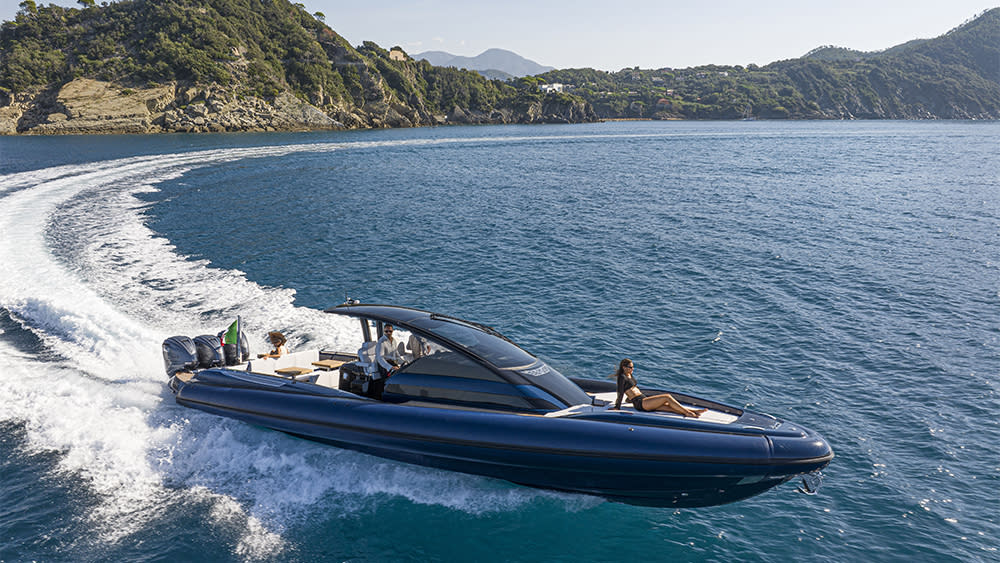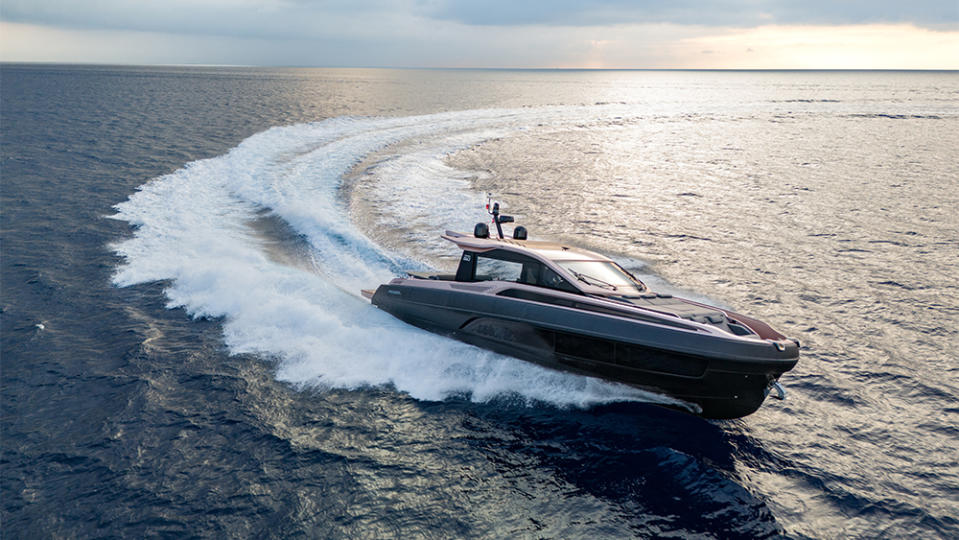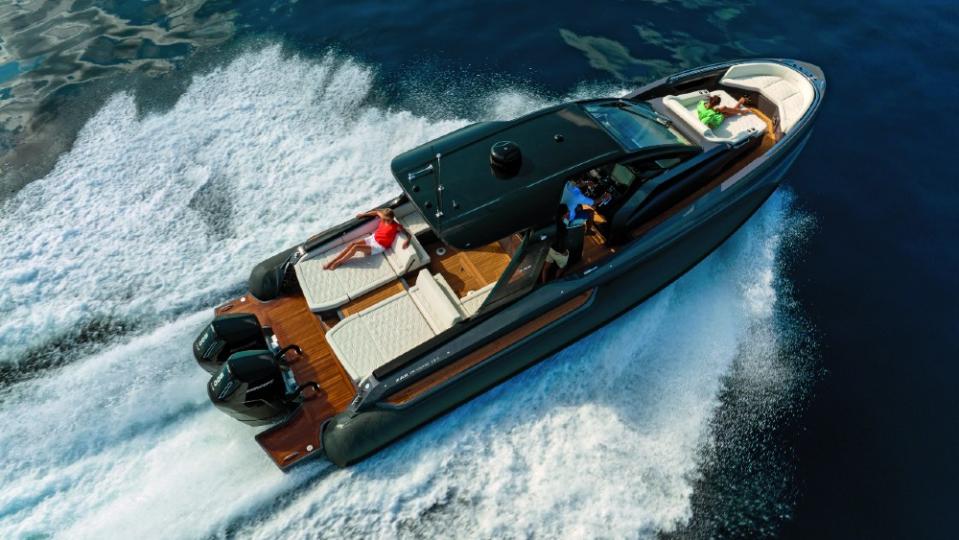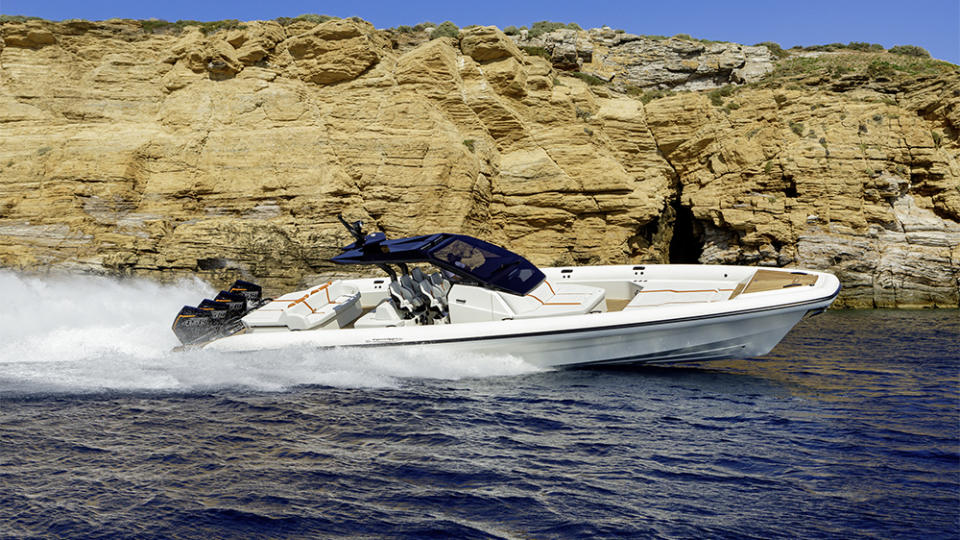Forget Day Boats. These Sleek Inflatable Tenders Want to Become Your New High-Seas Cruiser.

There’s a prevailing misconception about rigid-hulled inflatable boats (RIBs), especially stateside, that they are, well, a bit utilitarian. It’s true that, with their fiberglass hulls and puncture-resistant Hypalon tubes, they certainly seem better suited for work than for leisure. Yet that’s also why they have a long and respected history as go-to vessels for special forces units, not to mention as hardworking yacht tenders. And when did reliable, low-maintenance performance become a bad thing, anyway?
Now, with lengths approaching 72 feet and equipped with as many as five outboards, RIBs are gaining prominence in the Med as Italian builders rush to produce larger models to meet increased demand. In the U.S., meanwhile, day-boat markets such as Miami, Los Angeles, and the Hamptons are ripe for RIB takeovers. “Americans tend to think of these as tenders, not primary boats, but that’s changing,” says Piero Formenti, founder and CEO of Zar Formenti, which recently introduced its flagship 43-foot Imagine 130 with a price tag of $1 million.
More from Robb Report
VisionF Yachts Just Delivered Two Sleek New 79-Foot Aluminum Catamarans
The 1 Percent Emit as Much Carbon as the World's Poorest Two-Thirds, a New Report Says

The 130, with its sleek aesthetic and stepped fiberglass hull mated to 30-inch-diameter tubes, illustrates the sector’s new Maxi category: The vessel has two cabins, a full head and shower, a stylish carbon-fiber hard top and teak decks, a touchscreen-accessed Garmin electronics suite, a Fusion sound system, and large sun pads fore and aft. Two 600 hp outboards deliver a top end of 57 knots, and it even has a tender garage housing a small Zar inflatable.
That combination of design, speed, and quality puts it up against even top-dollar conventional sport boats.

Other Maxi launches include the 34-foot Onda 341P, the 48-foot Novamarine BS 140, the 50-foot Technohull Alpha 50, and the 50-foot Pirelli 50. Each features stealth profiles, top speeds between 50 and 60 knots, and surprisingly lavish appointments.
“Our Maxi-RIB customers aren’t just people who upgrade from smaller RIBs, but also owners of larger fiberglass boats,” says Paolo Lo Manto, shareholder and commercial director for Italian shipyard Lomac. As for clients who own conventional fiberglass boats, Lo Manto says that “many of them perceive RIBs as more practical and easier to manage” while also demanding “the same levels of quality and sophistication as their yachts.”

Then there’s the one-upmanship factor. “If you pull into Porto Cervo in a 45-foot yacht, nobody cares,” Formenti says. “But on a 45-foot RIB, people pay attention. There’s a real draw to these boats because they’re so distinct.”
Technology also continues to advance. The Sacs Marine Rebel series, with four models ranging from 40 to 55 feet, uses polyurethane foam instead of pressurized tubes. “It’s easy to mill, unsinkable, and creates more interior space for the boat,” says Giovanni De Bonis, CEO of Sacs Tecnorib. “It’s a Mediterranean product, but I see no reason why its success shouldn’t be repeated in the U.S. as it has across Northern Europe and Australia.”
Best of Robb Report
Sign up for Robb Report's Newsletter. For the latest news, follow us on Facebook, Twitter, and Instagram.

